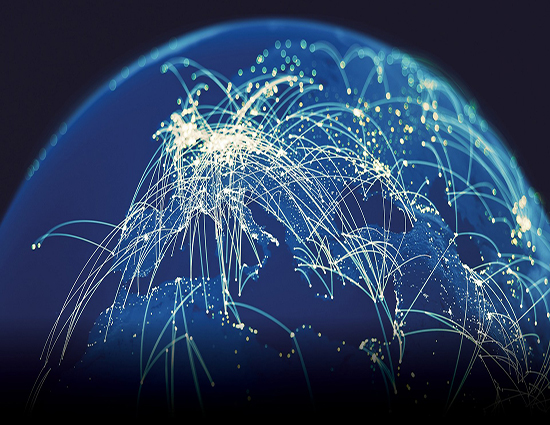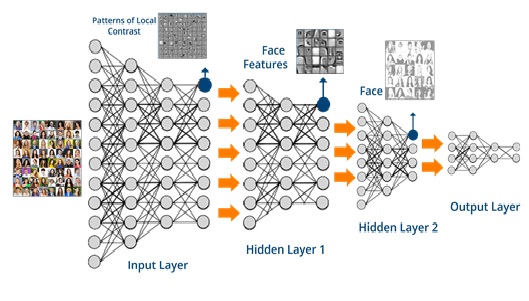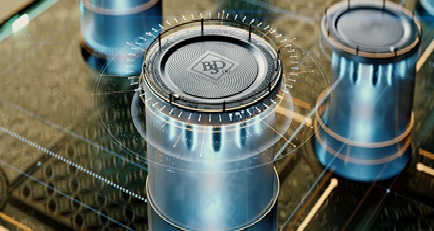Digital Image Processing
D. Vinotha October 07, 12:55 PM Technology
Digital Image Processing Tutorial provides basic and advanced concepts of Image Processing. Our Digital Image Processing Tutorial is designed for beginners and professionals both.
Digital Image Processing is used to manipulate the images by the use of algorithms. For processing digital images, the most common software that used widely is Adobe Photoshop.
Our Digital Image Processing [1] Tutorial includes all topics of Digital Image Processing such as introduction, computer graphics, signals, photography, camera mechanism, pixel, transaction, types of Images, etc.
Digital Image Processing
- Digital Image Processing is a software which is used in image processing. For example: computer graphics, signals, photography, camera mechanism, pixels, etc.
- Digital Image Processing provides a platform to perform various operations like image enhancing, processing of analog and digital signals, image signals, voice signals etc.
- It provides images in different formats figure1.
Digital Image Processing allows users the following tasks
- Image sharpening and restoration: The common applications of Image sharpening and restoration are zooming, blurring, sharpening, grayscale conversion, edges detecting, Image recognition, and Image retrieval, etc.
- Medical field: The common applications of medical field are Gamma-ray imaging, PET scan, X-Ray Imaging, Medical CT, UV imaging, etc.
- Remote sensing: It is the process of scanning the earth by the use of satellite and acknowledges all activities of space.
- Machine/Robot vision: : It works on the [2] vision of robots so that they can see things, identify them, etc.
Characteristics of Digital Image Processing
- It uses software, and some are free of cost.
- It provides clear images.
- Digital Image Processing do image enhancement to recollect the data through images.
- It is used widely everywhere in many fields.
- It reduces the complexity of digital image processing.
- It is used to support a better experience of life.
Some techniques which are used in digital image processing include
- Anisotropic diffusion
- Hidden Markov models
- Image editing
- Image restoration
- Independent component analysis
- Linear filtering
- Neural networks
- Partial differential equations
- Pixelation
- Point feature matching
- Principal components analysis
- Self-organizing maps
- Wavelets
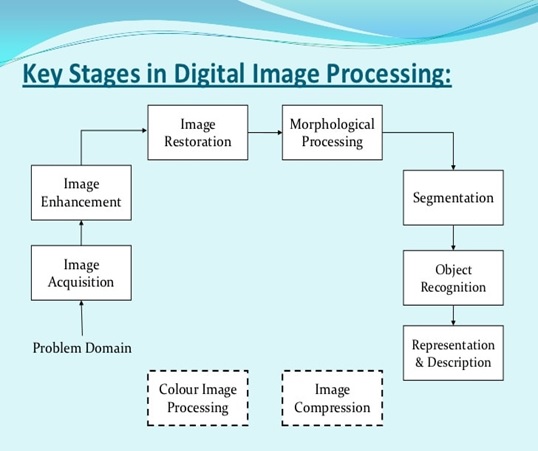
Figure1: Digital image processing.
Advantages of Digital Image Processing [3]
- Image reconstruction (CT, MRI, SPECT, PET)
- Image reformatting (multi-plane, multi-view reconstructions)
- Fast image storage and retrieval
- Fast and high-quality image distribution.
- Controlled viewing (windowing, zooming)
Disadvantages of Digital Image Processing [4]
- It is very much time-consuming.
- It is very much costly depending on the particular system.
- Qualified persons can be used.
PHASES OF IMAGE PROCESSING
- Acquisition– It could be as simple as being given an image which is in digital form. The main work involves:
- Scaling
- Color conversion (RGB to Gray or vice-versa)
- Image Enhancement– It is amongst the simplest and most appealing in areas of Image Processing it is also used to extract some hidden details from an image and is subjective.
- Image Restoration– It also deals with appealing of an image but it is objective (Restoration is based on mathematical or probabilistic model or image degradation).
- Color Image Processing– It deals with pseudo color and full color image processing color models are applicable to digital image processing.
- Wavelets and Multi-Resolution Processing– It is foundation of representing images in various degrees.
- Image Compression-It involves in developing some functions to perform this operation. It mainly deals with image size or resolution.
- Morphological Processing-It deals with tools for extracting image components that are useful in the representation & description of shape.
- Segmentation Procedure-It includes partitioning an image into its constituent parts or objects. Autonomous segmentation is the most difficult task in Image Processing.
- Representation & Description-It follows output [5] of segmentation stage, choosing a representation is only the part of solution for transforming raw data into processed data.
- Object Detection and Recognition-It is a process that assigns a label to an object based on its descriptor figure2.
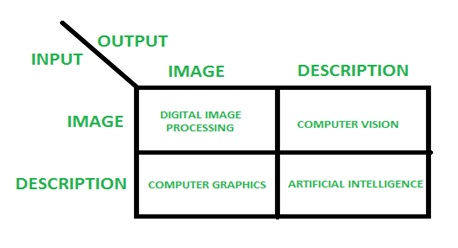
Figure2: image processing
References:
- www.geeksforgeeks.org/digital-image-processing-basics/
- https://www.tutorialspoint.com/dip/index.htm
- https://www.tutorialspoint.com/dip/image_processing_introduction.htm
- https://www.iare.ac.in/sites/default/files/lecture_notes/DIP-LECTURE
- https://www.tutorialspoint.com/dip/index.htm
Cite this article:
D. Vinotha (2021), Digital Image Processing, pp. 6
Previous Post Deep Learning vs Machine Learning
Next Post Haptic Technology


